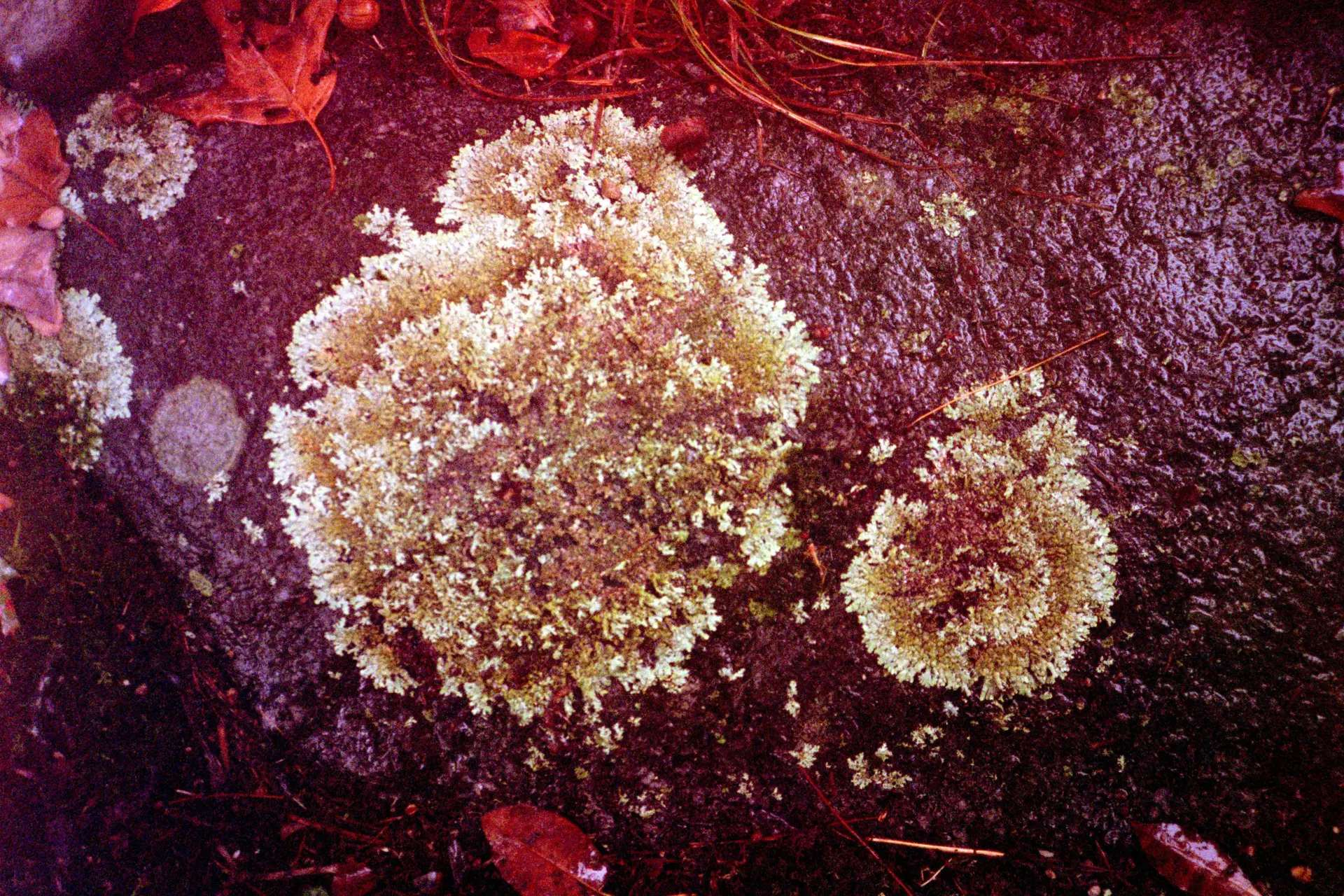No, I’m not talking about me. Though I have been accused!
This story’s about lichen— a YinYang symbiosis of two organisms:
- A fungus that harvests minerals for both from their common base,
- And an alga that photosynthesizes food for both from sunlight.
The type seen here grows like a crust on soil, trees, buildings, grave markers and rocks (granite in the picture). Technically, it’s a “crustose lichen.” They’re tough, and if left undisturbed, can live astoundingly long lives. The above-linked article claims that one crustose in the Arctic clocks in at 8,600 years old!
Still a Youngster
The one in my photo isn’t quite there yet. But it’s pretty easy to estimate its age. Since its fungus feeds on low-nutrition things like rocks, buildings and tree bark, this type of lichen usually grows by only 0.5 mm per year. Kate and I have been in our condo just over 8 years, and haven’t noticed if our lichen is growing that slowly (or at all). But it’s currently 230 mm across at its widest dimension. And assuming it’s been growing at from 0.5 to (say) 2 mm per year, it could be 115 to 460 years old… and may be closer to the latter.
Put in perspective, it:
- May have been born between 1563 and 1908, and been in its infancy at the same time as Galileo,
- Could have survived both the American Revolution and Civil War,
- Might have declined to vote for every U.S. president from George Washington on,
- And was certainly extremely old when bulldozers rolled in to raze the dairy farm that once stood here, and level the ground for our condos.
I’m also pretty sure it wasn’t disturbed by that 1983 construction. The town so strongly wanted the tax benefits of “high-density cluster housing” that they let the original developer build on 206 acres of agricultural/conservation land– provided that the land, trees and historic rock walls “would remain as untouched as possible.” As a result, our buildings are now scattered throughout a tall-treed paradise that in many places is undisturbed. And the pictured lichen covers a major rock buried in the ground within a protective cluster of trees that are as tall as others on the property.
Useful Organisms
Archeologists on TV sometimes claim that “rocks don’t offer dateable evidence.” But that’s not entirely true. Thanks to their lichen coverings, rocks have revealed when their faces were first exposed to air (including by retreating glaciers). Lichen have also helped to date images carved into Easter Island stones… and to chart changes in the planet’s climate and sea levels over the course of millennia.
And since lichen can live for thousands of years, they’ve even been credited with breaking down rocks themselves into extremely old, mineral-rich soil.
So unless something bothers the tough little guy in my photo, it may still cover its boulder when climate change has made our planet unlivable, time has turned our condos into rotting frames in the woods, and humanity has possibly even disappeared… or migrated to Mars.
Like the earth itself, lichen are built to survive. And both deserve our respect and protection.
NOTE: The above photo also appears in this Yashica T4 article.
–Dave Powell is a Westford, Mass., writer and avid amateur photographer.
Share this post:









Comments
Chalifour Bruno on Older than Dirt (a One-Shot Story)
Comment posted: 14/06/2023
"Trained in mathematics, physics, astronomy and Fortran computer programming. Retired mathematician, technical magazine editor, and documentation writer. 1989 winner of the Bruce B. Howat Award, an international business-journalism equivalent of the Pulitzer Prize (though I don't think the Howat is given out anymore). Past author and editorial advisor for Sesame Street (where I even worked with Jim Henson and Kermit)!"
How has this anything to do with 35mm or even photography??
Comment posted: 14/06/2023
Comment posted: 14/06/2023
Comment posted: 14/06/2023
Ibraar Hussain on Older than Dirt (a One-Shot Story)
Comment posted: 14/06/2023
Comment posted: 14/06/2023
Jim Hofweber on Older than Dirt (a One-Shot Story)
Comment posted: 15/06/2023
Comment posted: 15/06/2023
W&W on Older than Dirt (a One-Shot Story)
Comment posted: 15/06/2023
Comment posted: 15/06/2023